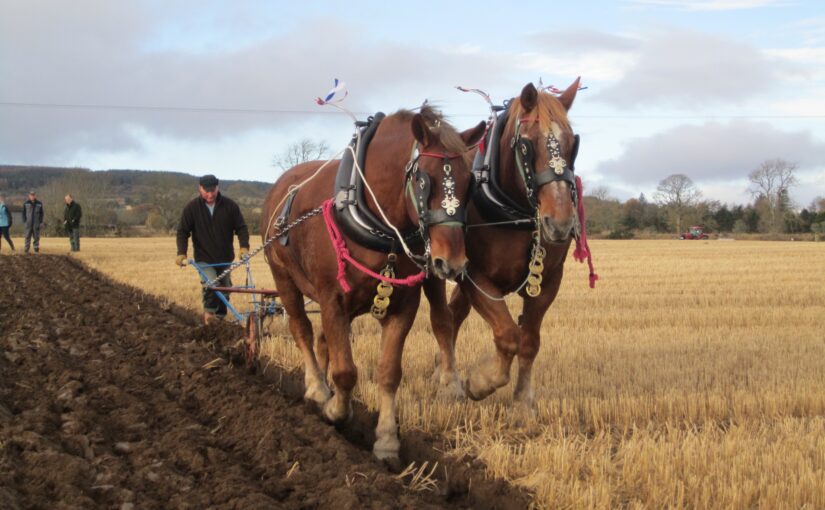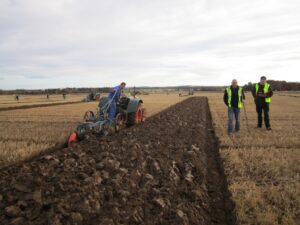The American stubble plough or chilled plough was introduced into Scotland in the second half of the 1870s. For a number of years thereafter there were a number of local demonstrations and competitions of these ploughs. These included demonstrations at ploughing matches as well as special classes for chilled ploughs to show farmers and agriculturists these ploughs at work and the work produced. These were also social affairs.
One such competition was held by the Echt, Skene, and Midmar Agricultural Association in December 1883. It was reported in the Aberdeen evening express of 17 December 1883. It shows the initiative of a local society to look at upcoming agricultural innovations and their potential use in their district. It also brought together the important implement makers and agents to display their wares at work. This competition had ploughs entered from the major English makers – Howard of Bedford and Ransome, Head & Jeffries, Ipswich. As usual, there was a comparison between these new ploughs and local ones, in this case one made by Mr Robertson, Cullerie.
“Competition of American stubble ploughs
Under the auspices of the Echt, Skene, and Midmar Agricultural Association a competition of American stubble ploughs was held on Saturday on a field kindly granted by Mr Barron, Templefold. The surface of the field has been broken by the grubber, but all the ploughs made very satisfactory work. The following were the entries: Howard’s Anglo-American plough, entered by Morrison Barclay, agent Aberdeen, and held by James Simpson, jun, Inverord; Ransome, Head & Jeffries, Ipswich, Anglo-American, wooden plough, entered by Ben Reid & Coy., Aberdeen, and held by James Simpson, sen, Inverord; Ransome, Head & Jeffries Anglo-American wooden plough, entered by Morrison Barclay, and held by Andrew Taylor, Cornhill; Oliver’s patent chilled American plough, entered by Morrison Barclay, and held by John Simpson, Inverord; Howard’s Anglo American wooden plough, entered by Morrison Barclay, and held by William Forbes, Wester Cullerlie. The ploughmen were all crack first prizemen, and the ploughs got every justice. The depth of the furrow was set at nine inches, with a breadth of fifteen inches.
A common plough made by Mr Robertson, blacksmith, Cullerlie, having been tried alongside of them, it was at once seen that the horses in the home-made implement had their strength more severely tested than those drawing the American ploughs. A dynommeter has been kindly granted by Mr Bruce, the secretary of the Royal Northern Agricultural Association, and it showed one point of superiority in the American ploughs-lightness of draught. The draught of the common plough was nine inches deep in depth from 6 ½ to 7 ½ feet. The draught of Howard’s Anglo-American plough at the same depth was from 5 to 5 ¼ feet. Ransome Head & Jefferies, Ipswich, Anglo-American ploughs from 5 ¼ to 5 ½ in; Oliver’s Patent Chilled American plough also do; Howard’s Anglo American wooden plough, do. The judges-Messrs Shepherd, Tersets; and Watt, overseer, Durris-as well as the onlookers, of which there were a considerable number, were unanimous in awarding the prize to Howard’s Anglo-American plough, while they ascribed the place of honour as the best held plough to William Forbes, Wester Cullerlie, with Howard’s Anglo-American wooden plough. The ploughmen and onlookers were liberally supplied on the field with refreshments by Mrs Barron. A number of friends along with the judges were also entertained to dinner and tea by Mr and Mrs Barron.”
What do you think of the competition?
The photos were taken at the Easter Ross ploughing match, 2012.


